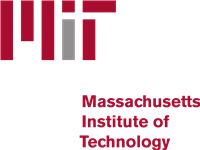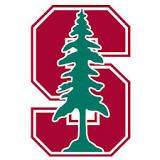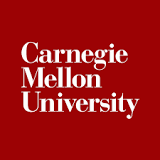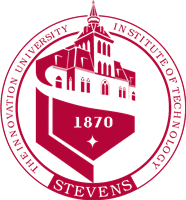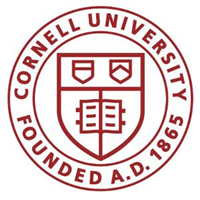What do they do?
Plan, direct, or coordinate activities in such fields as architecture and engineering or research and development in these fields.
Also known as:
Civil Engineering Manager, Electrical Engineering Director, Electrical Engineering Manager, Engineering Design Manager, Engineering Director, Engineering Group Manager, Engineering Program Manager, Engineering Project Manager, Engineering Supervisor, Global Engineering Manager, Mechanical Engineering Director, Mechanical Engineering Manager, Process Engineering Manager, Product Development Director, Project Engineering Manager, Project Manager, Research and Development Manager (R&D Manager)
-
3.2%
Change
Ranks #49 in job growth rate420Job Openings
Ranks #11 in net job growth
-
Massachusetts Institute of Technology
Cambridge, MA
-
Carnegie Mellon University
Pittsburgh, PA
-
Stanford University
Stanford, CA
-
Stevens Institute of Technology
Hoboken, NJ
-
Cornell University
Ithaca, NY
Looking for colleges that offer a specific major? Use the College Match Tool to find your best-matched schools and discover your estimated Net Price!
- Doctorate or Professional Degree (6%)
- Master's degree (30%)
- Bachelor's degree (48%)
- Associate's degree (5%)
- Some college, no degree (7%)
- High school diploma equivalent (4%)
- Less than high school diploma (<1%)
Most Popular Majors that prepare Architectural and Engineering Managers
-
#1
-
Degrees Granted
6,951
-
Female Students
1,308
-
Male Students
5,643
-
Median Starting Salary
$63,500
-
-
#2
-
Degrees Granted
6,779
-
Female Students
1,386
-
Male Students
5,393
-
Median Starting Salary
$64,000
-
-
#3
-
Degrees Granted
4,120
-
Female Students
1,406
-
Male Students
2,714
-
Median Starting Salary
$57,200
-
-
#4
-
Degrees Granted
3,744
-
Female Students
1,242
-
Male Students
2,502
-
Median Starting Salary
$51,600
-
-
#5
-
Degrees Granted
3,687
-
Female Students
1,927
-
Male Students
1,760
-
Median Starting Salary
$43,920
-
People in this career often have these skills:
- Reading Comprehension - Understanding written sentences and paragraphs in work-related documents.
- Active Listening - Giving full attention to what other people are saying, taking time to understand the points being made, asking questions as appropriate, and not interrupting at inappropriate times.
- Writing - Communicating effectively in writing as appropriate for the needs of the audience.
- Speaking - Talking to others to convey information effectively.
- Complex Problem Solving - Identifying complex problems and reviewing related information to develop and evaluate options and implement solutions.
- Mathematics - Using mathematics to solve problems.
- Critical Thinking - Using logic and reasoning to identify the strengths and weaknesses of alternative solutions, conclusions, or approaches to problems.
- Active Learning - Understanding the implications of new information for both current and future problem-solving and decision-making.
- Judgment and Decision Making - Considering the relative costs and benefits of potential actions to choose the most appropriate one.
- Time Management - Managing one's own time and the time of others.
- Monitoring - Monitoring/Assessing performance of yourself, other individuals, or organizations to make improvements or take corrective action.
- Coordination - Adjusting actions in relation to others' actions.
- Social Perceptiveness - Being aware of others' reactions and understanding why they react as they do.
People in this career often know a lot about:
- Design - Knowledge of design techniques, tools, and principles involved in production of precision technical plans, blueprints, drawings, and models.
- Engineering and Technology - Knowledge of the practical application of engineering science and technology. This includes applying principles, techniques, procedures, and equipment to the design and production of various goods and services.
- Mathematics - Knowledge of arithmetic, algebra, geometry, calculus, statistics, and their applications.
- Administration and Management - Knowledge of business and management principles involved in strategic planning, resource allocation, human resources modeling, leadership technique, production methods, and coordination of people and resources.
- English Language - Knowledge of the structure and content of the English language including the meaning and spelling of words, rules of composition, and grammar.
- Customer and Personal Service - Knowledge of principles and processes for providing customer and personal services. This includes customer needs assessment, meeting quality standards for services, and evaluation of customer satisfaction.
- Mechanical - Knowledge of machines and tools, including their designs, uses, repair, and maintenance.
- Computers and Electronics - Knowledge of circuit boards, processors, chips, electronic equipment, and computer hardware and software, including applications and programming.
People in this career often have talent in:
- Written Comprehension - The ability to read and understand information and ideas presented in writing.
- Oral Comprehension - The ability to listen to and understand information and ideas presented through spoken words and sentences.
- Oral Expression - The ability to communicate information and ideas in speaking so others will understand.
- Speech Clarity - The ability to speak clearly so others can understand you.
- Written Expression - The ability to communicate information and ideas in writing so others will understand.
- Problem Sensitivity - The ability to tell when something is wrong or is likely to go wrong. It does not involve solving the problem, only recognizing that there is a problem.
- Deductive Reasoning - The ability to apply general rules to specific problems to produce answers that make sense.
- Inductive Reasoning - The ability to combine pieces of information to form general rules or conclusions (includes finding a relationship among seemingly unrelated events).
- Mathematical Reasoning - The ability to choose the right mathematical methods or formulas to solve a problem.
- Fluency of Ideas - The ability to come up with a number of ideas about a topic (the number of ideas is important, not their quality, correctness, or creativity).
- Information Ordering - The ability to arrange things or actions in a certain order or pattern according to a specific rule or set of rules (e.g., patterns of numbers, letters, words, pictures, mathematical operations).
- Visualization - The ability to imagine how something will look after it is moved around or when its parts are moved or rearranged.
- Near Vision - The ability to see details at close range (within a few feet of the observer).
- Speech Recognition - The ability to identify and understand the speech of another person.
- Originality - The ability to come up with unusual or clever ideas about a given topic or situation, or to develop creative ways to solve a problem.
- Number Facility - The ability to add, subtract, multiply, or divide quickly and correctly.
People in this career often do these activities:
- Manage construction activities.
- Analyze data to determine project feasibility.
- Manage operations, research, or logistics projects.
- Negotiate project specifications.
- Prepare financial documents, reports, or budgets.
- Prepare operational budgets.
- Communicate organizational information to customers or other stakeholders.
- Confer with organizational members to accomplish work activities.
- Estimate demand for products or services.
- Analyze market research data.
- Approve expenditures.
- Implement organizational process or policy changes.
- Develop organizational policies or programs.
- Develop operating strategies, plans, or procedures.
- Direct facility maintenance or repair activities.
- Identify environmental concerns.
- Develop organizational goals or objectives.
- Manage human resources activities.
- Purchase materials, equipment, or other resources.
- Develop sustainable organizational policies or practices.
- Evaluate environmental impact of operational or development activities.
- Analyze impact of legal or regulatory changes.
- Communicate with government agencies.
- Present information to the public.
- Promote products, services, or programs.
This page includes data from:

 Occupation statistics: USDOL U.S. Bureau of Labor Statistics Occupational Employment Statistics
Occupation statistics: USDOL U.S. Bureau of Labor Statistics Occupational Employment Statistics


